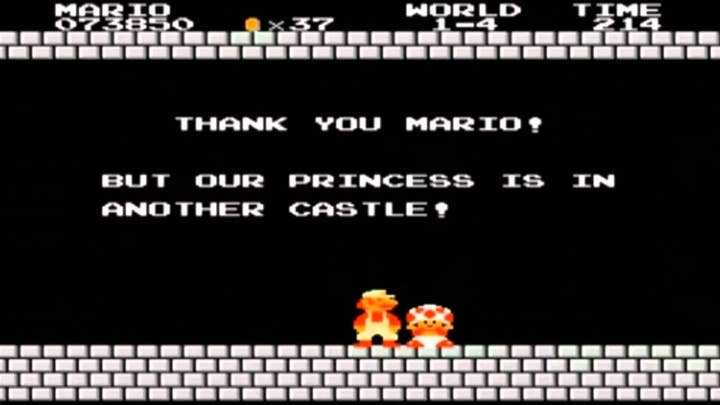Writing for Games, Part One: A brief history
Leading writers discuss how video games storytelling has evolved as the medium has advanced
In the past ten to 15 years, the quality of writing in games has been transformed. Not surprisingly, the primary agents of this transformation are professional writers.
Some of these writers come from backgrounds in linear forms of entertainment like novels, movies, TV, and theatre. Some have learned their craft entirely within the context of games. But they all agree that writing for games carries challenges and emphases that are different to other forms. Writing for games is a specific skill, and it takes a specific kind of writer to flourish.
In the first part of this two-part article, we speak to five successful writers about the history of narrative in games, and some of the causes behind the drastic improvement that can be seen in all areas of writing in games – from sophisticated environmental storytelling, to intriguing and surprising plots, to believable dialogue, to relatable, diverse and complex characters.
A brief history
There are still many games that skimp on narrative, believing that professional writers are an unnecessary luxury. After all, just about everyone knows how to write, right?
Greg Buchanan is the author of the successful novel Sixteen Horses, as well as indie games American Election and Paper Brexit, with writing credits including No Man's Sky and Metro Exodus.
"There's a low barrier of entry when it comes to writing a story," he tells GamesIndustry.biz. "As a writer, I can't begin to write code or create art assets, but any programmer or artist can write a story. It might not be any good, but it's a story."
In the earliest days of video games, story was barely deemed necessary. Space Invaders does not require a backstory about a heroic figure defending the world from aliens. Pac-Man is a character with a personality akin to a young child's toy, but his quest to eat pills and avoid monsters is never explained as part of the play experience.

As games became more sophisticated, character and story began to appear -- most often as part of marketing campaigns -- there were, nonetheless, flimsy narratives. Often, these took the form of mascot marketing, borrowing heavily from fairy tales. The princess is kidnapped by an ogre and after many trials and dangers, she is rescued by the hero. But neither the hero nor the princess is altered in any way by this trauma, and the monster's motivations are basically a thirst for power and an infatuation with the princess – neither of which are investigated.
Other games borrowed heavily from genres favored by the people making games, mostly Gen X men who had grown up in the era of Star Wars and its attendant imitators. Dungeons & Dragons and fantasy novels were heavily plundered, as games sought to imitate movies through text dialogue box sections or cutscenes. Many of these were, at best, clunky and amateurish. Today, they make for entertaining YouTube comedy fodder.
"People were writing for games but just did it because they had time or they fancied a go"
Rhianna Pratchett
Big game franchises sometimes used stories or scenes to generate outrage-fodder for the media; a cheap form of marketing that it's still in use today, often generated by executives more interested in the bottom line than in coherent storytelling.
"When I started out in journalism over 20 years ago, I never met a game writer," says Rhianna Pratchett, who began her career writing about games for magazines. She has written for dozens of games including Heavenly Sword, and the Tomb Raider reboot trilogy, as well as writing comics and books.
"People were doing the writing for games," she recalls, "but no one was really talking about it. And it was usually their secondary job. They just did the writing because they had time or they fancied a go. It was one area of daily development that wasn't regularly done by a professional in that field."
Of course, there were exceptions to the general morass of mediocrity. Early text and point-and-click graphical adventures leaned heavily into narrative, sometimes with great effect. But if these genres ever enjoyed a commercial golden era, it was short-lived.

Enter the indies
It's almost impossible to pinpoint the precise time this century when writing for games began to be taken seriously. But the where is easier to find. Digital distribution stores like Steam gave indie developers an outlet to express themselves, and tell their own stories. And they seized upon this opportunity.

Big budget games are now investing in writing teams, who work in conjunction with other development departments. A few are even supported by the hard power of directors who have come from a writing background. Others -- as was the case with the brilliant Elden Ring -- are working from narrative templates created by world famous writers like George R.R. Martin, and alongside revered game creators like Miyazaki Hidetaka, whose game writing is second to none.
However, these are the exceptions. Business-trained executives are still prone to marketing-led interference, or a Dunning-Kruger belief in their own storytelling abilities. Writers with an intimate knowledge of their characters are sometimes required to make changes that they know are absolutely wrongheaded, leading to friction and, not infrequently, resignations.
"I've talked quite openly about how I wasn't a fan of having Lara [Croft's] father be a big plotline in Rise of the Tomb Raider." says Pratchett. "But that was dictated from on high and I had to find peace with it to do my job. But you've got to be prepared for taking advice and direction from people who are good at their jobs, but aren't necessarily experienced in story."
Jedidjah Julia Noomen has written for dozens of games including the forthcoming A Plague's Tale: Requiem, as well as for television and theatre. She says: "Those horror stories are definitely still there, but I don't think they are exclusive to games. The bigger the company, the more people are involved, and the harder it's going to be to have influence from a lower level.
"AAA games cost a lot of money. There are more stakeholders and hierarchy that there is more at stake. Also, a lot of games are led by people who've had success doing things a certain way, and they tend to stick with what's worked for them in the past."
Changing audiences
Of course, the past looks very different from the present, in terms of audience demographics and their desires. Until relatively recently, games were assumed to be bought by teenage boys and young men. They were made and marketed accordingly. Today, the gaming audience is much older and more diverse. Although demographic generalizations are tricky, it's probably fair to say that women in their 30s have different expectations from the games they play than lads in their teens.

In other words, the changing tastes of the game-playing public have morphed to such an extent that even the most old-school company leaders and game directors are now required to put serious effort into hiring, empowering, and rewarding skilled narrative designers.
"One of the big reasons for that shift is the fact that a lot of middling games have been saved by a unique narrative approach that's created a connection to their community," says Xalavier Nelson Jr., creative director at his development label Strange Scaffold, and, most recently, writer and creator of An Airport for Aliens Currently Run by Dogs and Witch Strandings.
"On the other hand, how many otherwise great games are dinged for significant narrative missteps? When you have professionals in the room, they can save you from yourself. So even as a matter of insuring against a PR disaster, people see the value of having a narrative professional in the room, to bring nuance to the subject material."
He adds: "There're always going to be people who believe themselves to be games writers because they can type into a Word doc. And to be absolutely fair, a lot of great ideas and even great lines have come from people who are not [professional] game writers. But a narrative professional's role is tying together a cohesive experience and solving the natural problems that arise from game development. You're always going to have an exponentially positive impact when you get that kind of person in the room, even at a fairly junior level."
In our second part of this special, we share these writers' tips on best practices when creating stories for games and how to stand out in this sector.
